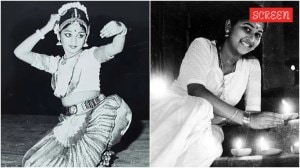The van Gogh of Gross-Out
Basil Wolverton,Mads early signature artist,embodied the magazines sick-and-proud humour with his images....
If you were a pre-teenager in the 1950s and had precocious friends or a with-it dad,its a good bet you knew the cartoons of Basil Wolverton,the Michelangelo of Mad magazine,even if you didnt know his name.
Like rock n roll and beatniks,Mad was a freakish spawn of the A-bomb era. It was like an emanation from some dark,Dada side of Disney; and a preview of the underground-comics era to come. Wolverton,who is the subject of a career survey at Barbara Gladstone Gallery in Chelsea,NY,this summer,was Mads early signature artist,the one who embodied its sick-and-proud humour.
His specialty was a beyond-grotesque species of fictional portraiture,typified by the Beautiful Girl of the Month on the cover of Mads 1954 takeoff on Life magazine. The images in pen and ink were a virtuoso exercise in bad taste,all the weirder for being so meticulously executed.
His early work picked up on popular cartoon styles of the day but still had an uncouth look and tone of its own. Wolverton clearly chafes under the constraint of conventional genres. What was constant from project to project was a style of labour-intensive draftsmanship based on bold forms. Almost as consistent was Wolvertons appetite for deformations and mutilations of human flesh. Such sadistic hilarity made him a star in 1946.
That year the cartoonist Al Capp introduced a character named Lena the Hyena,the ugliest girl in Lower Slobbovia to his Lil Abner strip. Her face,however,was not seen but the public clamoured to see her. Capp issued an open invitation for people to send versions of what they imagined her to look like,with the best entry to be chosen by celebrity judges Frank Sinatra,Boris Karloff and Salvador Dalí. Wolvertons won. His Lena was printed not only in the Capp strip,but also in Life magazine.
Then came the 1950s and Mad. The magazines appearance was a transformational event in American pop culture. Suddenly,humour was an assaultive form of anarchy.
For many people Wolvertons art could be incredibly cruel. And,he reserved some of his most repellent effects for images of women. Like so much of American culture in the 50s,when a new feminist consciousness was just beginning to coalesce,his work comes across as spectacularly misogynistic.
It may or may not be pertinent that Willem de Koonings paintings of women as fragmented lumps of matter with bared teeth and googly eyes were being produced and exhibited at roughly the same time that Wolvertons female grotesques were in wide circulation.
In 1941,he had become a member of a Protestant sectRadio Church of God,later the Worldwide Church of God. He was ordained as an elder in 1943,and as his contribution to the sect he illustrated some of its apocalyptically minded publications,as well as the biblical account of the earths final days.
Several of his end-of-the-world pictures are wild. Plagues descend on the sin-ridden human race. Bodies break out in disfiguring boils. Faces burn,shrivel and stretch into masks of fear. In this context even the ultra-bonkers cartoons Wolverton did in the 1960s and 70s for the post-underground Gjdrkzlxcbwq Comics and DC Comics make sense.



- 01
- 02
- 03
- 04
- 05



























